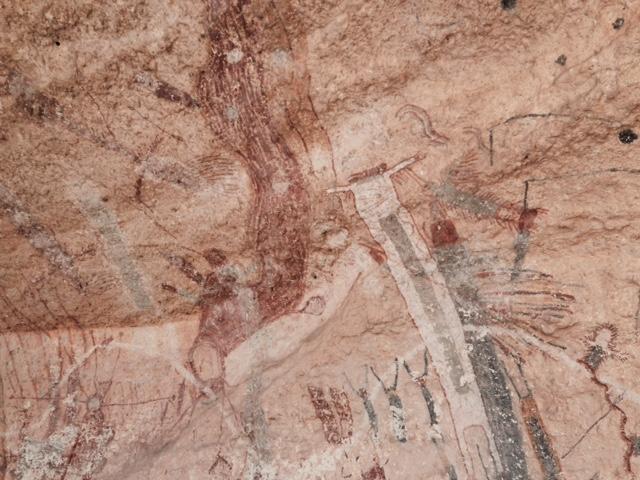Audio will be available shortly.
From Texas Public Radio:
Standing in front of the White Shaman there is a sense of awe and wonder. Thousands of years ago a mysterious people painted this other worldly image on a West Texas cliff face. Today visitors make the journey to this rock shelter on the Mexican border outside of the town Comstock – to gaze in wonder.
“Oh it’s absolutely gorgeous”
Christina Alvarado is struck by the paintings scale and composition. Its 20 feet across with multiple animal-human stick figures painted in red, black, yellow. The central figure in white.
“This is a unique experience,“ said Gary Hightshoe, a retired professor of landscape architecture. He says it’s clear that this is a sacred message but today it is indecipherable.
“I think the layers of meaning are lost,” said Hightshoe.
But archeologist Carolyne Boyd has spent years researching and analyzing the painting. She says its story is finally being revealed.
“This painting has so much significance that goes beyond the symbols themselves.“
She says the mural tells the story of the first people of Texas and their ideas about the creation of time and the universe. And White Shaman tells it’s story over and over again each year.
“At Winter Solstice in the mural at sunset the sun climbs up the panel up until it reaches this White Shaman figure – lunar deity – and at that point the line stops. And essentially the sun decapitates the moon.“
Get to the White Shaman mural is not easy. Be prepared to walk about two miles on narrow rocky trails that climb up and down the cliff faces of the lower Pecos river valley. But the view is worth it.
The Rock Art Foundation has long maintained the land here known as the White Shaman Preserve, giving tours, studying the images and keeping them safe from vandals.
But at the state of this year the Witte Museum took over ownership. The two groups will work together maintain the site.
“The critical thing about this is it’s going to allow access to the property over the generations and also protect it and conserve it, ” said Harry Shafer, the curator of archeology for the Witte.















